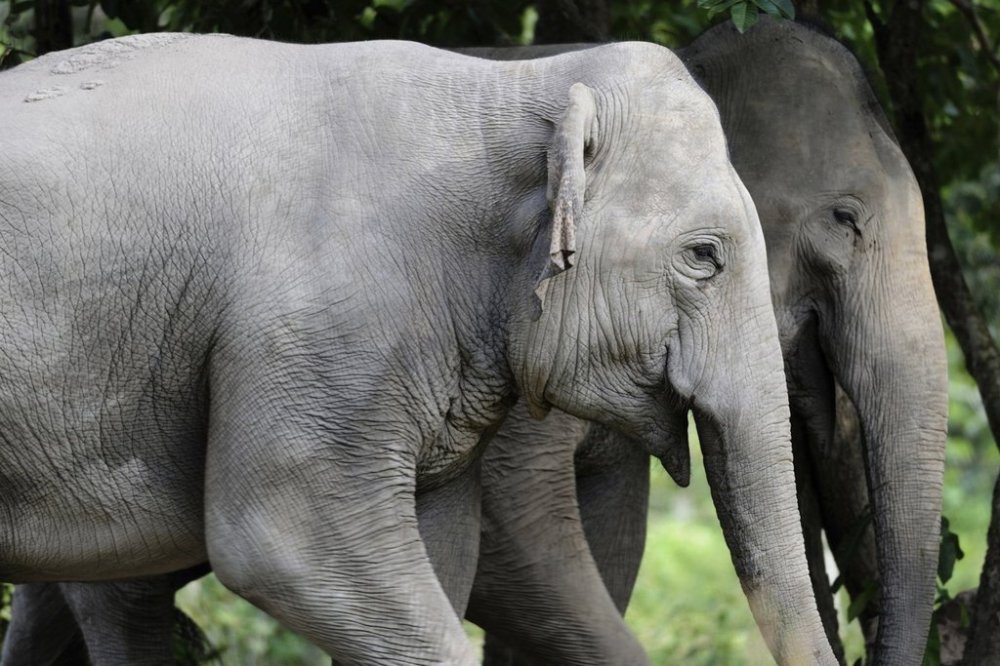The Asian elephant population in Cambodia is more robust than previously thought, a study finds
Advertisement
Read this article for free:
or
Already have an account? Log in here »
To continue reading, please subscribe:
Monthly Digital Subscription
$0 for the first 4 weeks*
- Enjoy unlimited reading on winnipegfreepress.com
- Read the E-Edition, our digital replica newspaper
- Access News Break, our award-winning app
- Play interactive puzzles
*No charge for 4 weeks then price increases to the regular rate of $19.00 plus GST every four weeks. Offer available to new and qualified returning subscribers only. Cancel any time.
Monthly Digital Subscription
$4.75/week*
- Enjoy unlimited reading on winnipegfreepress.com
- Read the E-Edition, our digital replica newspaper
- Access News Break, our award-winning app
- Play interactive puzzles
*Billed as $19 plus GST every four weeks. Cancel any time.
To continue reading, please subscribe:
Add Free Press access to your Brandon Sun subscription for only an additional
$1 for the first 4 weeks*
*Your next subscription payment will increase by $1.00 and you will be charged $16.99 plus GST for four weeks. After four weeks, your payment will increase to $23.99 plus GST every four weeks.
Read unlimited articles for free today:
or
Already have an account? Log in here »
Hey there, time traveller!
This article was published 13/03/2025 (281 days ago), so information in it may no longer be current.
PHNOM PENH, Cambodia (AP) — A genetic study of Asian elephants in northern Cambodia published Thursday reveals a larger and more robust population than previously thought, raising hopes the endangered species could slowly recover.
Researchers from the Fauna & Flora conservation group collected samples from elephant dung in Cambodia’s northern plains and extracted DNA. From the DNA they were able to identify individual elephants, estimate population size, and determine the sex of the animals and the overall genetic diversity of the population.
From their work they estimated that there are 51 elephants in the Prey Lang, Preah Roka, and Chhaeb Wildlife Sanctuaries, with greater genetic diversity — a “critical factor for long-term viability,” the researchers said — than in two other areas of the country in which they live.

“With sufficient suitable habitat remaining in the region, the population has the potential to grow if properly protected,” the report concludes.
Overall, some 400 to 600 Asian elephants are believed to remain living in the wild in Cambodia. Researchers said the study’s findings underscore the potential of the northern area studied to become a “national stronghold” for them, contributing to Cambodia’s biodiversity conservation goals.
“Habitat degradation, especially when it leads to fragmentation, continues to be a serious concern,” Pablo Sinovas, director of Fauna & Flora in Cambodia, told The Associated Press.
“This study provides a robust basis on which to base conservation efforts and landscape management.”
The study, supported by USAID funds and Britain’s People’s Postcode Lottery, was conducted in collaboration with the Cambodian Environment Ministry. The genetic testing was done at the Royal University of Phnom Penh with technical support from the Royal Zoological Society of Scotland.
The research was carried out in the 2020-21 dry season, but Sinovas said since elephants reproduce slowly it is not thought that the population size would have changed significantly since then.
Researchers want to replicate the study elsewhere in Cambodia and in other countries, such as neighboring Vietnam where the Asian elephants live in fragmented populations.
“We were very pleasantly surprised by the results of the project,” said Alex Ball, conservation manager for the Royal Zoological Society of Scotland.
“We now hope to expand this methodology across Cambodia and beyond, helping to build a clearer picture of Asian elephant numbers, which will inform how best we can work to help reverse the decline of these spectacular animals.”
____
Rising reported from Bangkok

